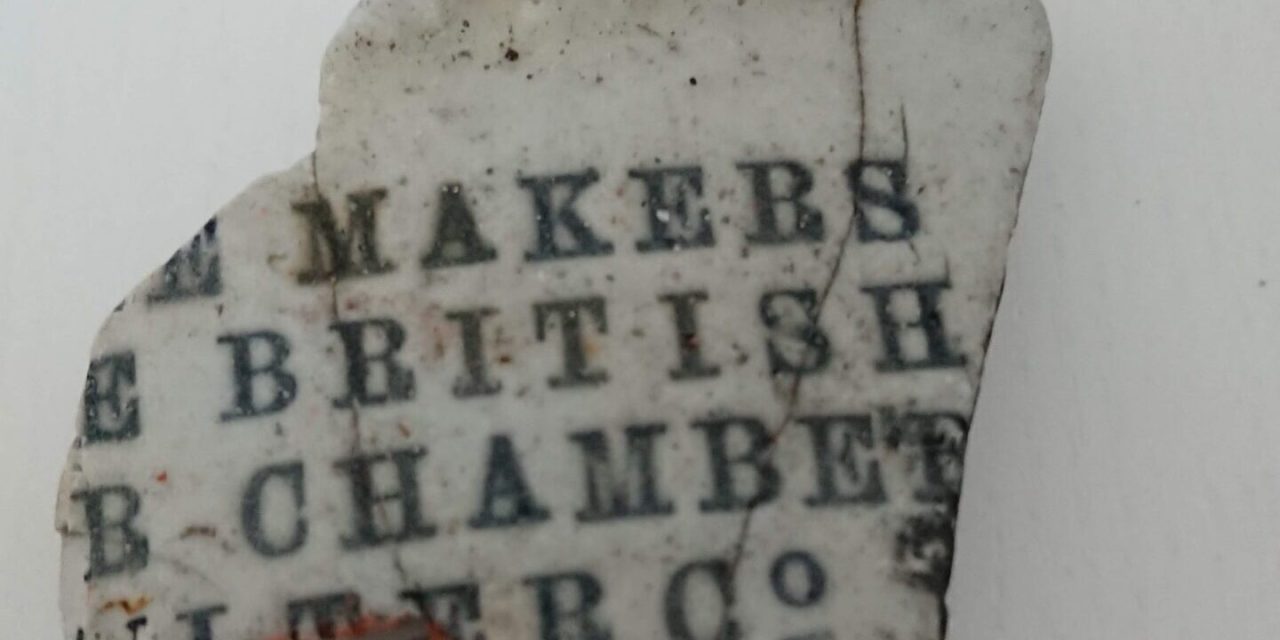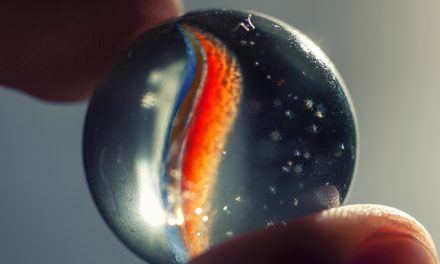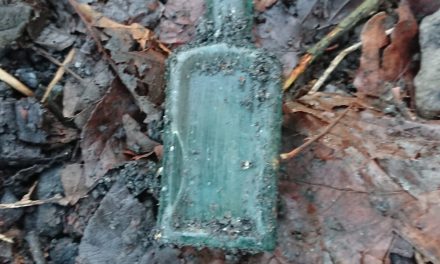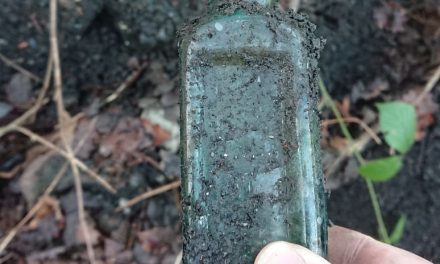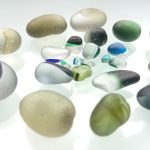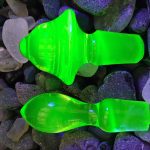I found this fragment at a local river dump; after doing a little research, I found out it is from a type of water filter that was invented in 1884 by Charles Chamberland of The British Pasteur-Chamberland Filter Co Ltd.
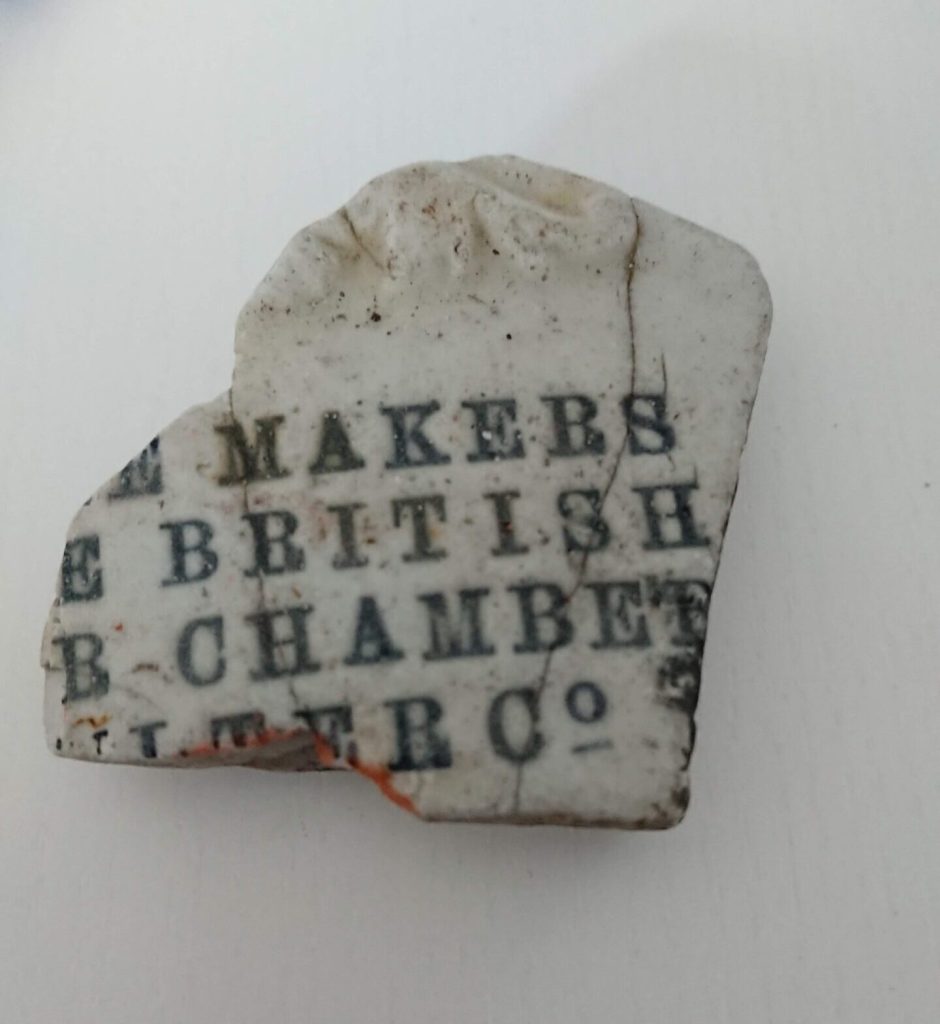
What to expect from our article
Who was Charles Chamberland?
Charles Chamberland was a French microbiologist. He was born to a homemaker and school teacher in 1851. Chamberland would make great strides during his lifetime and even became a household name thanks to the invention of his water filter.
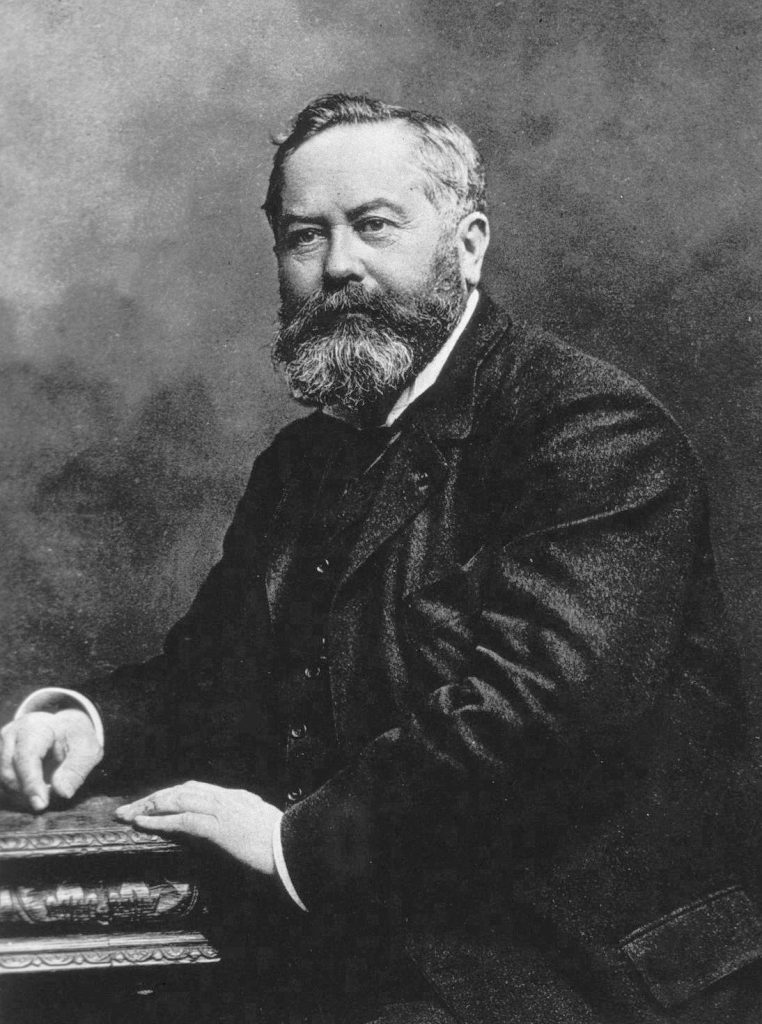
Schooling
Schooling wasn’t an automatic right back in the old days. Only the wealthy or true academics went on to high school or college, and most of those chosen for higher education were boys.
Schooling wasn’t a priority back then as most children of that era were put to work. Some of those children may never have seen a classroom, especially those children who lived in rural communities; it was mainly city children that attended full-time school.
Chamberland was one of the lucky ones and was destined for academia. He attended lycée Rouget-de-l’Isle de Lons-le-Saunier choosing to study mathematics and science.
It was customary for academics to be sent to France to further their education, and this was no different for Chamberland. It was during this time that his future was sealed with a chance introduction to Louis Pasteur while seeking better accommodations. Pasteur could see his passion for technical devices and appointed him as an official curator at the laboratory.
Start of the journey
Louis Pasteur was involved in a long-standing dispute with a Dr Bastian. Bastian believed that Pasteur’s theory that “every illness was attributed to a specific germ” was wrong, so Chamberland was instructed to investigate some experiments that were previously tried but had failed. Chamberland investigated and discovered the exact reason the previously tried experiments had failed, leading to a better understanding of the theory of germs. Pasteur published his theory in 1876, referencing Chamberland for his contributions.
Creating the water filter
Chamberland developed a porcelain water filter that could be used to remove microorganisms from pressurised water. The Chamberland water filter was modelled on an earlier 1827 water filter made by Henry Daulton.
The Thames River was heavily contaminated with raw sewage, cholera and typhoid were wreaking havoc on the city, and Henry Daulton was commissioned by queen victoria to produce a water filter for her. Daulton came up with a porous ceramic cartridge which was capable of removing almost all bacteria.
Initially, the water filter Charles Chamberland invented was used for sterilising equipment in the laboratory, soon word spread and people heard that it also filtered and purified water for drinking. The water filter was quickly being used in homes everywhere.
Pasteur believed that it was the air that carried germs, but it was then discovered that all water, no matter how pure contained microscopic organisms. Thus the invention of the water filter. Chamberland came up with a version that could be fitted to the tap, Pasteur later modified the filter, which is why the design carries his name too.
Another designer of water filters at the time was Berkefeld which still uses the same ceramic filters like the ones used in the original Henry Daulton ones from back in the day, yes Berkefeld is still manufacturing water filters today.

Filter design
The filter consists of a porous unglazed porcelain tube, also called the bisque. This tube contains an enamelled porcelain ring, and the inflow pipe fits through the ring. Inside the porcelain tube is a metal pipe, the pipe has holes for which the water flows out and is collected. The inflow is pressurised, which means water filtration happens due to force.

Why use a water filter?
Filtering water was essential as several diseases such as cholera and typhoid could be transmitted by drinking contaminated water. These days we have huge water treatment centres that supply clean water to households around the country which means we no longer require the water filters of the 1800s; however, some people do still like to filter their tap water.
How much does it cost?
I’m not sure what they would have cost back in the day, but if you wanted to purchase a Chamberland water filter today, you would be looking to pay around £60-£100.
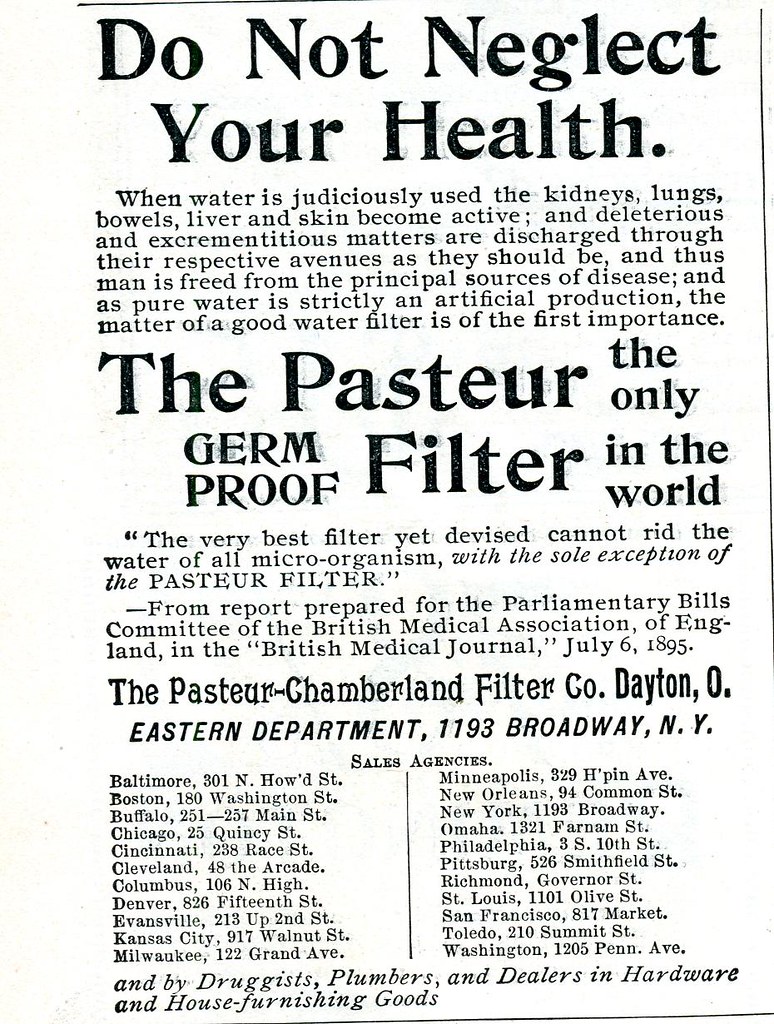
Chamberland discoveries
Chamberland accidentally created a vaccine. Pasteur had been working on a vaccine to treat chicken cholera after a recent outbreak. Up until then, all previous attempts had ended in the death of the chickens.
As Pasteur was going away on holidays, he instructed Chamberland to inject a new batch of chickens with the most recent vaccination. Chamberland himself went on holiday forgetting to carry out the vaccination. Upon his return, he remembers he hadn’t done what he was instructed to and vaccinated the chickens anyway using the aged culture.
Chamberland expected the chickens to die, but they didn’t, they got sick and recovered. Pasteur returned, and Chamberland explained what had happened. He instructed Chamberland to inject the chickens with a fresh culture of the bacteria expecting it to kill them; surprisingly it didn’t, the chickens remained unaffected leading to the idea that the earlier air-exposed vaccine could have been the reason they recovered.
It was discovered that cultures, when left for some time exposed to air, would be rendered less potent and rather than infecting, and killing them it merely exposed them with just enough to make them immune. Pasteur, along with Charles Chamberland and Emile Roux, would go on to develop a live attenuated vaccine to treat anthrax.

